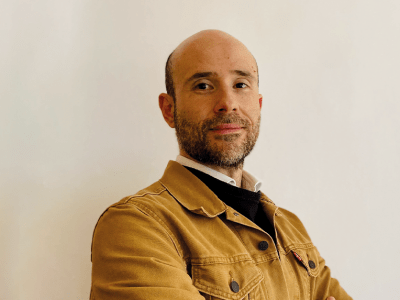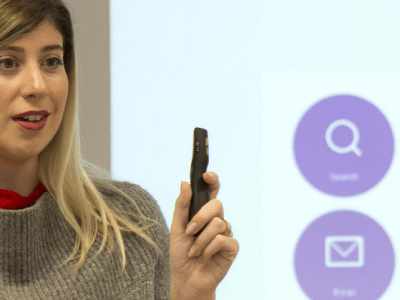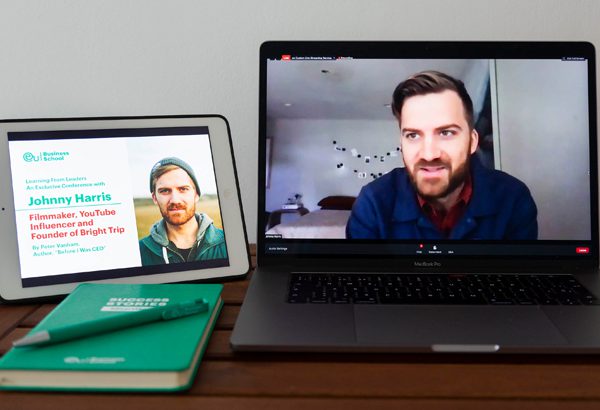Building Bridges and Brands: A Guide to Creative Strategy with Martijn Tiemersma
Creative strategists are in high demand at the moment. And a growing number of both startups and established companies are creating full-time positions for people with applicable training and experience. But what does the term ‘creative strategy’, which is often misunderstood, actually mean? And how can entrepreneurs and business leaders craft and implement effective approaches?
We invited Martijn Tiemersma to discuss the topic. Martijn is a senior creative strategist at Typeform, a fast-growing startup that offers one of the web’s best-known form and survey creation tools. He’s worked with an array of high-profile clients, including IKEA, Audi and the Dutch Football Union, which he’s particularly proud of as a Dutchman.
Martijn split his talk into two parts: bridges and brands. In this post, we’re going to outline the main points from each one.
1. Bridges: Laying the Foundation for Creatives
So what exactly is a creative strategist? Martijn, who jokingly admitted that his parents still don’t understand exactly what he does, said that his job is to lay the groundwork for other people in his company to “start creating”.
He takes the blank canvas of a client’s instructions and builds a broad outline, defining the creative process at a high level. And it’s this framework that provides space for specific, original ideas.
At Typeform, the creative process is split into five stages, all of which are easy to replicate:
- Briefing: Working from a client brief, Martijn will develop an outline of the assignment. This outline is made up primarily of the client’s goals, along with descriptions of the problems that need to be solved to achieve them.
- Strategy: After the initial brief has been thrashed out, Martijn and his team will analyse data and conduct both customer and competitor research. At this stage, Martijn attempts to answer one overriding question: what are potential customers actually looking for?
- Ideation: With a solid starting point, creatives can now begin to brainstorm specific ideas and suggest what visual, emotional, psychological and narrative elements a campaign might contain.
- Production: At this stage, specialists like writers, designers, musicians and so on create the assets for the campaign.
- Delivery: Finally, content distribution channels are leveraged to provide concrete, measurable results for the client.
At each of these stages, the role of the creative strategist is to act as a voice of reason and manage the creative journey. They ensure that the process doesn’t deviate from the primary aim of achieving a specific outcome for the client.
Now, you’re probably wondering, “How does this relate to bridges?” Martijn went on to speak about how he is essentially creating ‘bridges’ at each stage of the creative process. And when looked at through this unique lens, the scope of creative strategy takes on new meaning.
At the briefing stage, Martijn is creating a bridge between the language that clients use and the language that creatives understand. During the strategy phase, he’s connecting three different perspectives: what the audience needs, the client’s goals, and the market opportunities and technologies available.
When it comes to ideation, brainstorming and production, Martijn says that it’s crucial to create and maintain a bridge between the suggestions of the creatives and the actual objectives of the campaign. And finally, when managing delivery, it’s necessary to ensure continuity between the current project and any future ones, thus creating a basis for improvement and innovation moving forward.
2. Brands: More Than a Logo, a Tagline and a Design
Martijn kicked off the second part of his discussion with a concise but powerful point. He said that a brand isn’t a company’s logo, tagline, look-and-feel, copy, or anything else people typically associate with the term. A brand is best represented by what people say about a company in private.
Martijn then explained why a rigorous approach to brand-building is so important. A strong brand enables a company to stand out from the competition, build long-term relationships and become part of the broader culture.
Like the creative process, brand-building has five related stages that anybody can replicate:
- Define the core belief: At this stage, you should clarify the central problem that your brand solves or the joy it creates.
- Create a manifesto: A manifesto is an outline of the promise that your brand makes about how it will solve customers’ problems and affect the world in a positive way. It is a description of a company’s broader values.
- Follow-through on your promises: Once you’ve laid the groundwork, you should take action. What infrastructure do you have in place to follow through on your promises? What specific solutions and products will you offer?
- Design the look-and-feel: Create assets that communicate your brand’s message. In this phase, you are creating the touchpoints through which potential customers will interact with your company.
- Communicate: Your communication strategy covers the specific channels that you will use to bring your message to the world and how that message will stay unified.
Martijn went on to outline how this process looks in practice. At Typeform, the founders began with a core desire to create “a world of more personal business relationships”. They then wrote a manifesto which outlined their specific ambitions to “have meaningful conversations at scale” and “make every interaction count”.
To translate these ideas into practice, they created a personal, user-friendly form service that is still the most important part of Typeform’s value proposition. The company’s values – of empathy, togetherness, joy and making a positive difference – underpinned the creation of specific brand assets like the logo, colour palette and imagery. And finally, a consistent communication strategy was implemented to ensure consistency of message across all departments, including sales, marketing, customer service and so on.
Martijn finished by emphasizing that successful brands have strong stories. They work from a clear set of core values and aren’t afraid to disagree. The team at Typeform, for example, took a clear stance on COVID-19 and the Black Lives Matter movement, all because they were acting from a strong foundation and knew what they and their company stood for.
Develop Creative Skills at EU Business School
If you’re interested in a career in brand strategy, EU Business School can provide you with the skills, training and hands-on experience you need to find success. We have a thriving network of campuses in Europe’s most ecxciting cities and teach all of our courses in English.










